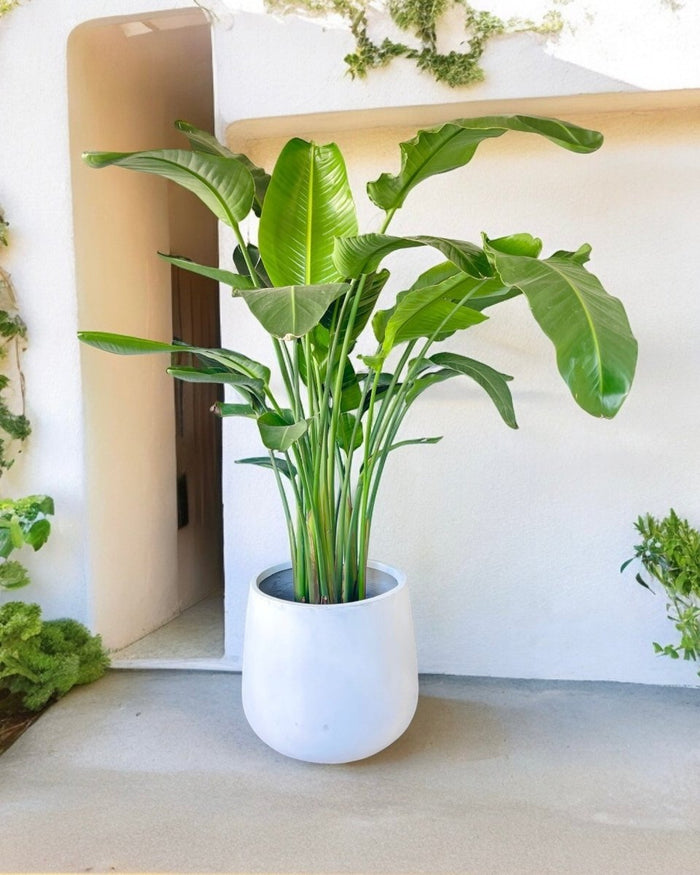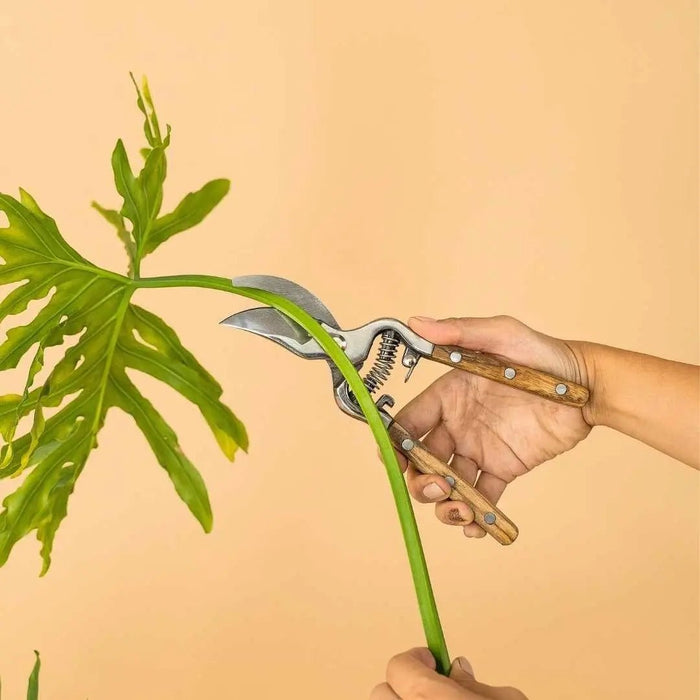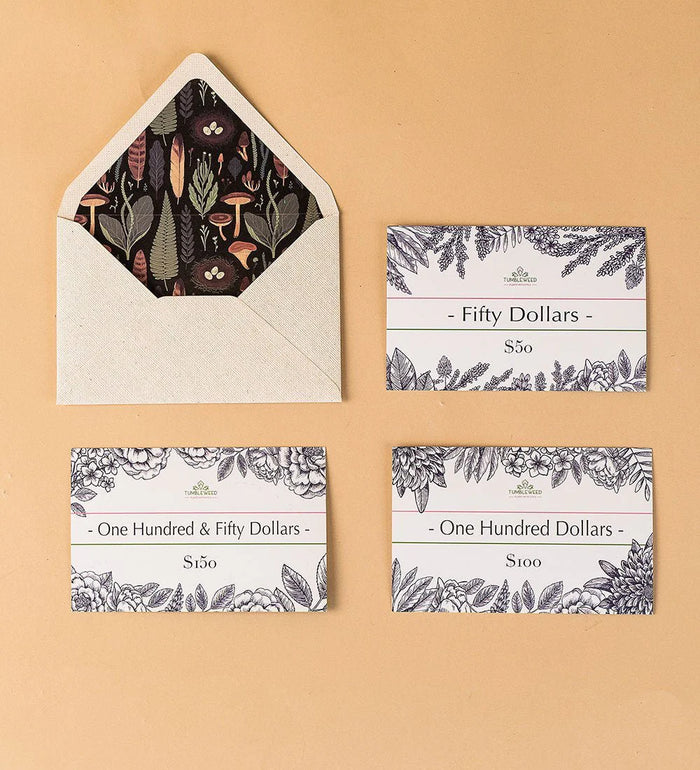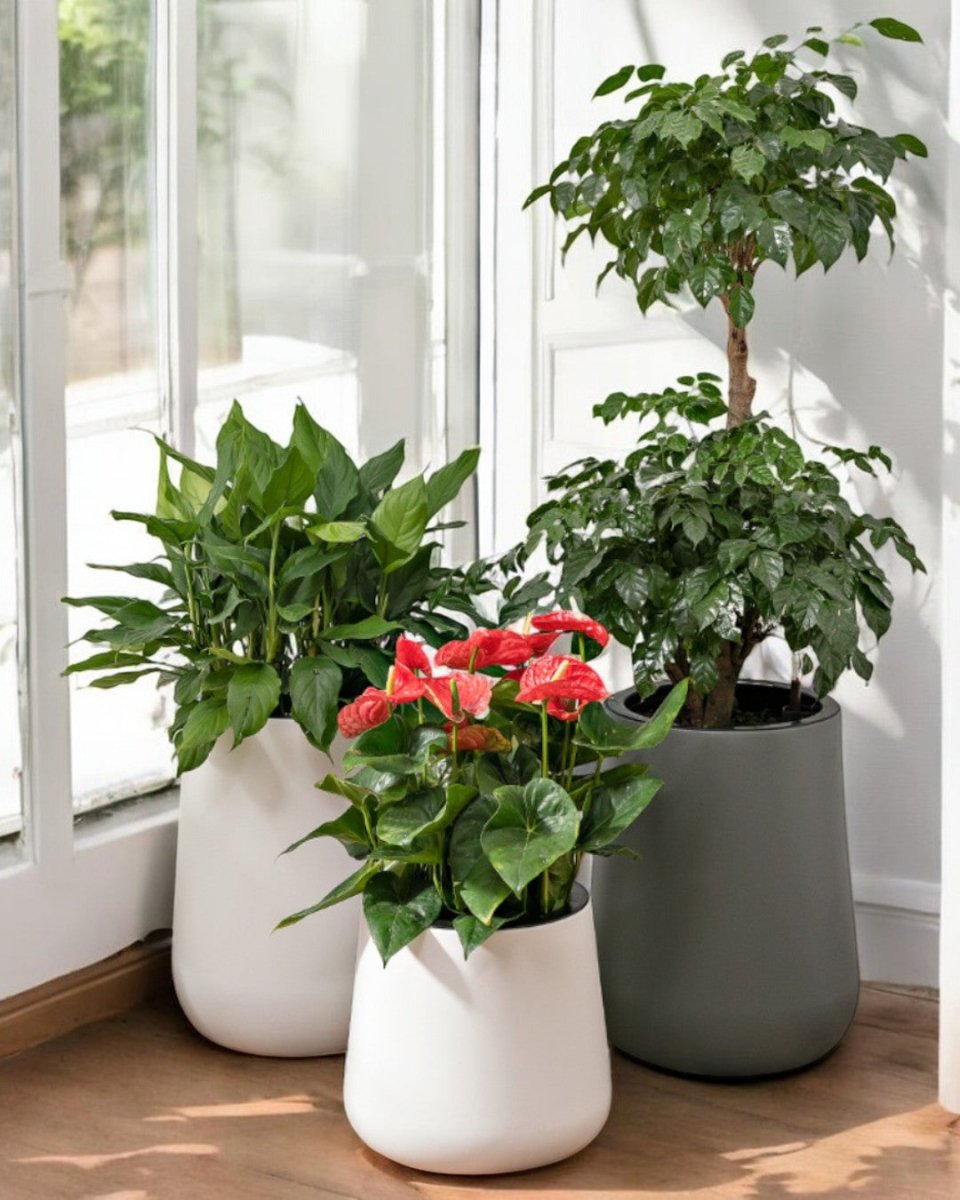The Bird of Paradise, or Strelitzia, boasts a gorgeous, tropical display of large and glossy leaves. Its enormous, deep green foliage and lush jungle vibes are a real head-turner when added to your interiors, as they are when these plants are placed outdoors.
Search plants, planters, garden accessories and more.
-
Sale
-
Plants
-
Pots
-
Care
-
Decor
-
Gifts
-
Services
-
Business
Free Delivery Above $99 | Shop Now
What's New
-
 Year End Sale: Up to 50% off→
Year End Sale: Up to 50% off→ -
 🎁 Corporate Gifts! 🎁→
🎁 Corporate Gifts! 🎁→ -
 Transform your space with our Plant Styling Services!→
Transform your space with our Plant Styling Services!→ -
 Low Light Corner?→
Low Light Corner?→ -
 Login to Earn & Redeem Points!→
Login to Earn & Redeem Points!→ -
 🎉 Making buying plants easy! 🎉→
🎉 Making buying plants easy! 🎉→

Year End Sale: Up to 50% off
Upgrade your decor now! Automatic tiered discounts mean bigger savings on plants, planters & more. Watch your progress bar fill up as you shop! Sale ends soon. 🌱
Also don't miss out on our free XL Everfresh giveaway, auto enrolled when you make a purchase with us.
Shop Plants
🎁 Corporate Gifts! 🎁
Planning corporate gifts for the festive season? Make a lasting impression with our premium plant gifts! Perfect for clients, partners, or employees, our curated selection of plants is both meaningful and elegant. Choose from a variety of options that fit any budget. Order now and ensure your corporate gifts are delivered in time for the celebrations.
Bulk Gifting
Transform your space with our Plant Styling Services!
Looking to refresh your space for the year-end festivities? Elevate your home decor with our Plant Styling service! Whether it’s a cozy corner or a grand living room, our expert tips will help you transform your space into a green oasis. Perfect for setting the holiday mood! Get inspired and start styling your space with our premium plant collections.
Start your Project
Low Light Corner?
No worries! Our Plant Lights are here to help your plants grow! Specially designed and made for houseplants.
Shop Lights
Login to Earn & Redeem Points!
Login and automatically enrol into our Rewards program, earning you points, and get exclusive deals and discount
Login Now
🎉 Making buying plants easy! 🎉
We have made buying plants even easier, with our customer service team, equipped to provide you with a plant recommendations. Hit us up on our chat channels to get started!
Shop NowUp to 50% off with our Year End Sale!
Free delivery above 99SGD
🎁 Free Gift Above $120

Bird of Paradise: Information and Plant Care Guide
- Regular Price
- from $95.00
- Sale Price
- from $95.00
- Regular Price
- $180.00
- Unit Price
- /per
- Regular Price
- $18.00
- Sale Price
- $18.00
- Regular Price
- $28.00
- Unit Price
- /per
- Regular Price
- $65.00
- Sale Price
- $65.00
- Regular Price
- $80.00
- Unit Price
- /per
Varieties from our listing
Interested to buy a plant from this group?
See what we have available HERE
Below is a general care guide for Strelitzia plants which can slightly differ depending on variety.
Light & Temperature
Since birds of paradise are tropical plants, they thrive best in a sunny, bright-lit spot and can sustain prolonged periods of full sun. Though they can tolerate minimal shade, the Bird of Paradise will not thrive long-term without sufficient sunlight so it is always best to place them in bright light.
Watering, Humidity & Misting
Water your Bird of Paradise thoroughly when top 2-3 inches of soil is dry, usually once a week. They do best with a regular watering schedule.
Bird of Paradise do well in typical household humidity but it will also appreciate intermittent misting. To boost humidity, mist the plant 1-2 times a week.
Soil and Repotting
Birds of Paradise prefer rich, well-draining soil that still retains some moisture.
To keep the plant at a manageable size while providing fresh nutrients and encouraging new growth, repot the plant once every 2-3 years. Roots becoming visible outside the soil is a sign that the plant is due for repotting.
Propagation
Propagating birds of paradise is best done through division. Since they like their roots tightly packed, it is only recommended to propagate from a plant that has a lot to spare or has become rootbound.
Fertiliser
Use a balanced fertiliser formulated for houseplants. Follow the directions on the label of our Down to Earth. organic plant food.
Toxicity
Birds of paradise are toxic if ingested and should be kept out of the reach of children and pets. The ingestion of flowers and seeds is extremely toxic.
Possible Issues
Under the right care and conditions, your plant will grow happy and healthy. But here are some issues you may encounter while caring for a Bird of Paradise:
Scale, mealybugs and spider mites - When spotted, wipe the leaves with a soft cloth and warm, soapy water.
Splitting leaves - Some people think this is an issue but it is completely normal and natural for this plant to have split leaves as these allow wind to pass through the leaves without causing damage.
Yellow leaves- This is caused by overwatering. Check the roots to make sure there is no root rot and adjust the watering schedule as needed.
Curling leaves and/or brown leaf edges - This is usually caused by underwatering or the environment being too dry. Birds of Paradise are generally thirsty plants so regular watering is a must and occasional mistings will help greatly.
Not blooming - The plant might not be getting enough sunlight and moisture. Make sure there is adequate light and watering. Unlike birds of paradise that are grown outdoors, your indoor bird of paradise will usually not bloom.
TumbleweedPlants.com
Live Chat 💬
Whatsapp:+65 80561106
getintouch@tumbleweedplants.com
514 Chai Chee Lane (Office & Warehouse)
-Strictly not open to walk-in
Company
Helpful Links
Join Our Community
Join 40,000+ plant lovers and get care tips & inspiration.
About
TumbleweedPlants.com is an independent plants retail brand, established in Singapore in 2016. We make stylish indoor plants easy and accessible to all with great looking houseplant varieties, the biggest selection of planters and indoor plant care essentials delivered to your door.
Shop with confidence from the Best Plant Home Decor Online Store Today!


















































